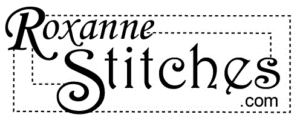Are you afraid of trying to do a binding on a project? Do you avoid projects that call for a binding because you think it’s hard?? Have you purchased packaged bias binding and fiddled with it and it ends up looking wonky or gets thrown into your UFO bin?? WELL……I have the solution for you!!

Binding done well can give a professionally finished look to any project, however it can be difficult to achieve an even uniform look. Pushing or pulling the bias while sewing can end up looking horrible!! (dare I say, “homemade“) I have a technique that works like a charm. I’m going to demonstrate on the neckline of the jacket I’m currently working on. I chose to cut off the 3/8″ seam allowance on the neckline and not bind my neckline with pre-made bias binding sewn and turned to the inside of the garment as the pattern called for. I will be using a double binding with 3/8” finished width.

2. Cut the fusible interfacing 1/8″ wider than your binding width. In my case the finished binding was 3/8″, so I cut my facing 1/2″ wide.

3. Stay stitch the neckline as usual at 1/4″ to prevent the neckline from stretching out of shape. (yet another telltale sign of being “homemade”) There goes the “H” word again.


6. Press the binding in half. Pin and stitch the binding onto the neckline at 3/8″.

7. You’re going to need a piece of waxed paper for the next step. Carefully fold the bias binding toward the raw edge of the neckline and pin. Starting at the center back of the neckline press the binding toward the raw edge with the waxed paper underneath your neckline. Using the waxed paper prevents the fusible interfacing from sticking to your pressing surface. After you press the entire neckline peel away the waxed paper if it stuck in any places.

8. Turn your neckline wrong side up and continue to fold bias binding over the fusible interfacing pressing the binding firmly to the fusible facing.




Great tutorial 🙂 Thanks for sharing!
I've pinned this one for future reference 🙂
Just pinned also. Thank you!
Thank You both for pinning my tutorial and taking the time to comment!!
Thank you so much for this tutorial it was very helpful.
You're welcome!! Glad you found it helpful!!